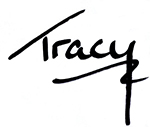
It’s been a mucky couple of years, with the pandemic putting stress on everything, including the supply of printed books and, not least of all, nervous systems.
One of the stress victims was the indie publishing industry in general, as it was already evolving into new directions even before the pandemic threw extra burdens on the separating infrastructure.
We indie authors have one advantage that traditionally published authors do not: We can pivot on a dime.
And that has been what we at Stories Rule Press have been doing for the last few weeks: Figuring out how to pivot and in what direction, to respond to changes in the industry.
I mentioned this in my weekly log post on Patreon earlier in the week, along with the observation that my writing has been impacted. And it will continue to be impacted for much of this year, too.
The challenges we (and that includes you) are facing:
- The ebook market will grow very slowly now. It’s not at saturation, but those readers who still cling to their print editions, despite the cost, won’t shift over to cheaper ebooks as easily as other readers.
- So print is still an important format. Finding ever more markets for print editions, and driving deeper into those markets, will be an important strategy for indies.
- Audiobooks are coming to the fore. And when (not if) AI narration kicks into the mainstream, the market will explode. (And AI is very, very close.)
- The number of audio distributors is also increasing.
- Serial fiction is screaming into view.
- Fiction apps (Radish, et al), which encourage reading in snippets, are also cutting into the standard ebook novel market.
- This reading-app market will train readers to enjoy short fiction, or very long fiction, (100K or more) whether it is in installments or not (binge-reading will continue to be a thing).
- Foreign markets are opening up, making it even easier for indie authors to publish abroad, in languages other than English.
- More and more authors are selling direct to readers from their sites.
- The direct-selling and wide authors are stimulating author joint ventures and cooperative publishing, which is increasing exponentially.
- Support services, including marketing services (BookBub, BookFunnel, Story Origins and other digital bundling services, and much more) are providing additonal ways to publish and promote, that often require rebundling/repackaging your product (so do reading apps, by the way).
- Libraries and subscription services are also experiencing a resurgence in popularity. Kobo Plus, for example, just launched in six more countries recently.
In general, there is a gradual pulling away from the novel-at-a-time retail-store-centric selling of fiction which we’ve adhered to since Amazon introduced the first Kindle in 2007. The number of ways you can read/listen to fiction, these days, is exploding.
I have been considering all this, along with the fact that I have been indie publishing for ten years, this year. My approach to indie publishing was formed at the birth of the indie scene. My platform is now in need of an overhaul to match the new demands of the industry.
The platform overhaul will include serious amounts of writing, both fiction and non-fiction, most of it not for publication in the standard way. We (SRP) will also be doing a lot more direct publishing with other authors and selling fiction that won’t be available on retail storefronts. And that’s just two of the major projects we want to put into place.
In order to meet the writing requirements of this new pivot plan, I will be scaling back my primary fiction output to a mere 10,000 words a week, plus three days to plot the novelette. Each of my three pen names will publish a novelette every four weeks, so I meet the minimum rate of publication the algorithms on the retail sites favor.
This also has the advantage of getting my writing at least six months ahead of the release date. Having pre-orders out for nearly six months opens up a plethora of marketing opportunities that short pre-order periods just can’t facilitate.
I will be using the time I gain from this cut back to write all the other fiction and non-fiction I need for the new platform. While my official word count will look ridiculously low, I will, in fact, be writing my ass off.
This may sound rather obscure, but hang in there. In a few months’ time, PIFW readers will start to see the changes and understand what I’m talking about, for PIFW is part of the overhaul.
Would cutting back help you go forward?
This is a question you may well find yourself asking, somewhere in the life of your writing career.
I have been disciplined about putting out a book a month plus, for years. Getting the next book out is the best form of marketing there is. And having a robust backlist is the second best tactic for selling more books.
But that’s if you’re continuing to sell the same way you have before.
We will be selling books the way we always have, but we’re also adapting to the new markets opening up, which requires a pivot and re-tooling. So for a good chunk of 2022, I will be minimizing my standard publishing schedule, while I set up for the new markets. It’s a sign of the times that the retooling involves writing lots of fiction.
And then I’ll be coming back to write lots more fiction for standard book release, the way I always have.
If you follow my weekly work logs, where I report my week’s word count and comment on it, in theory, you shouldn’t see my word count dip too much. I’ll report on all the secondary fiction and non-fiction I write as well as the primary stories.
Sometimes, yes, cutting back your primary production might be called for…but only if it’s temporary, and the reasons you cut back will help you write even more in the future. If you like writing lots (and it is addictive), then it will take deep thought and strategic thinking to make the call.
I hope you all have a wonderful Christmas, tomorrow. Especially, I hope that this year, you get to enjoy time with your extended family. I will be.
Cheers,

Write More, Faster Than Ever Before | Are You Prolific?
Editing Your Next Novel? Mark Posey offers fast, writer-friendly edits with zero drama. Check out services »
